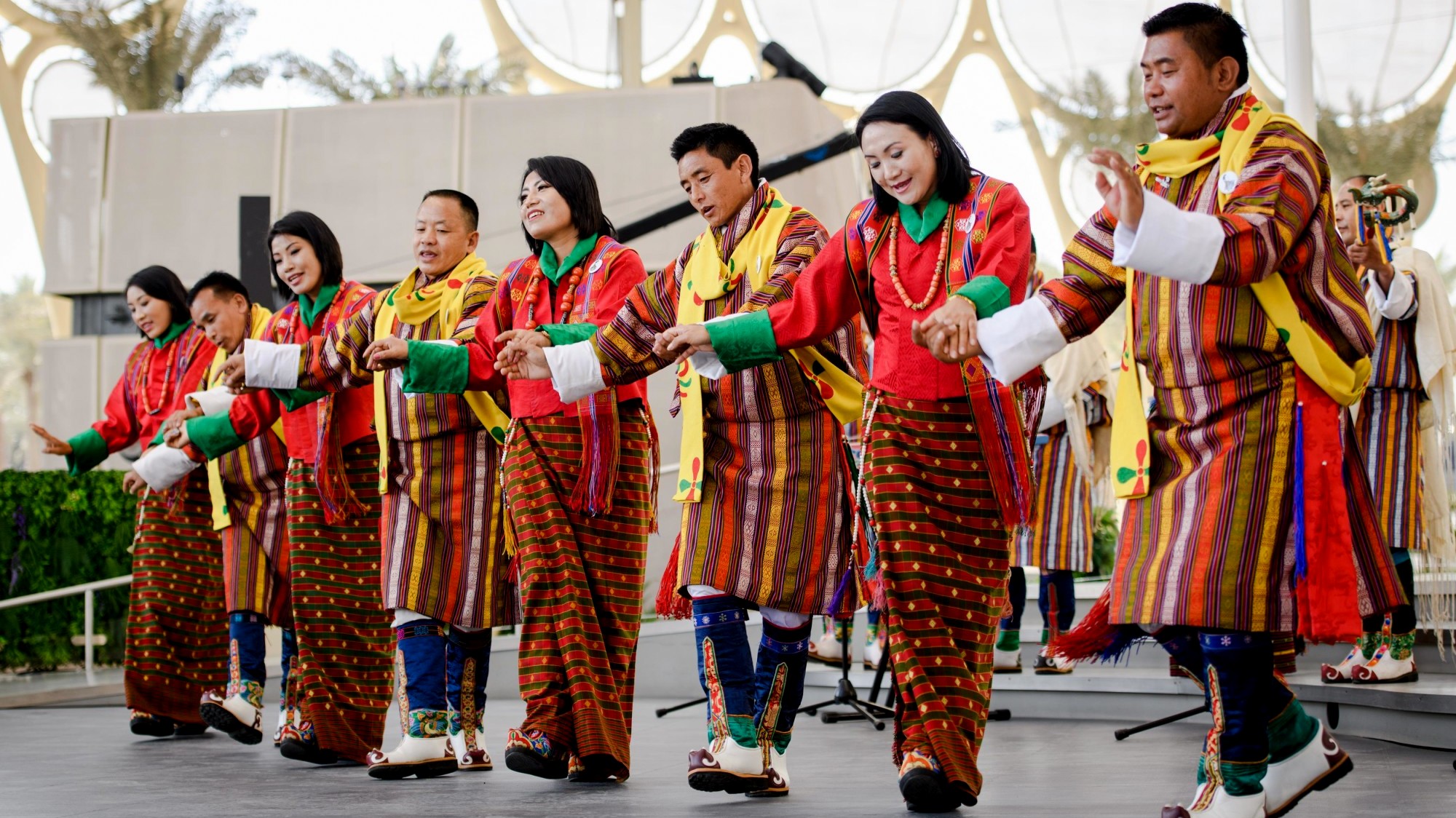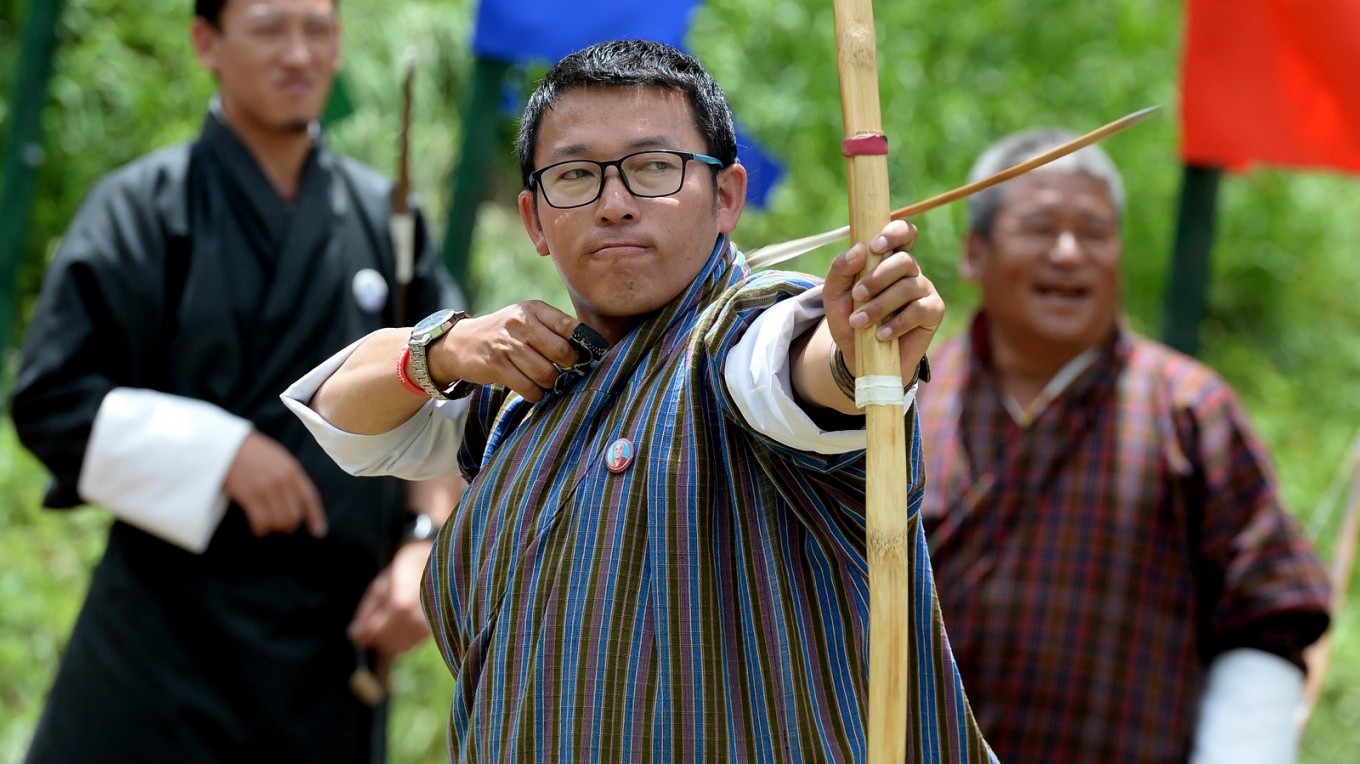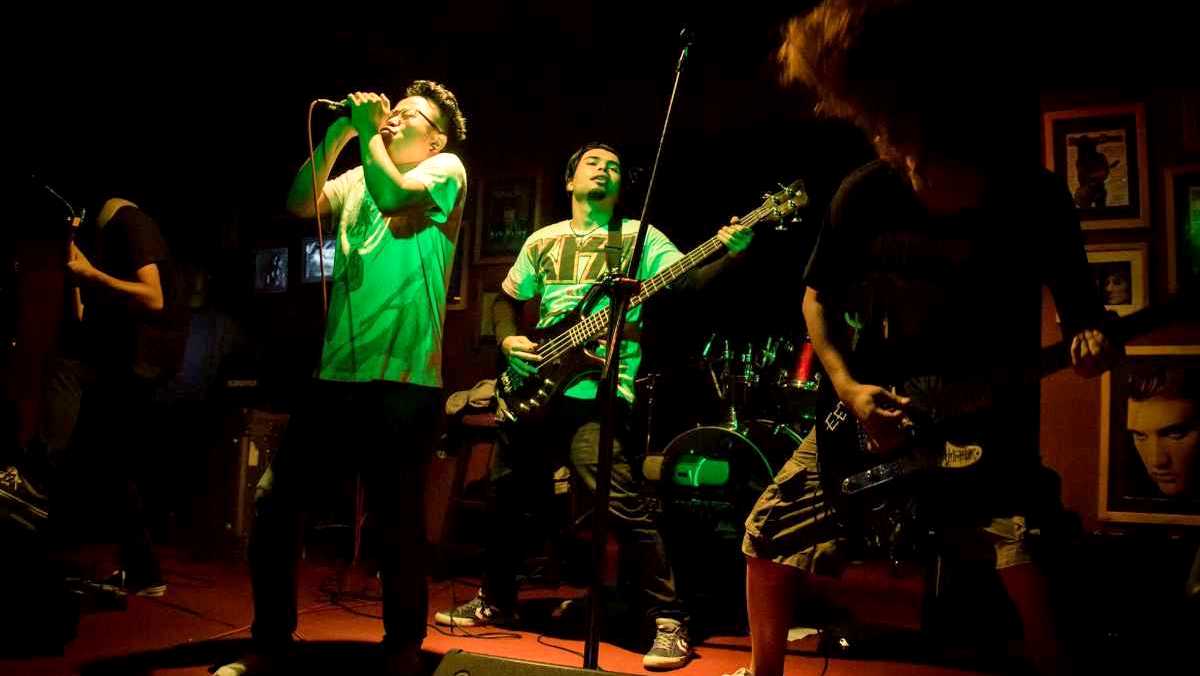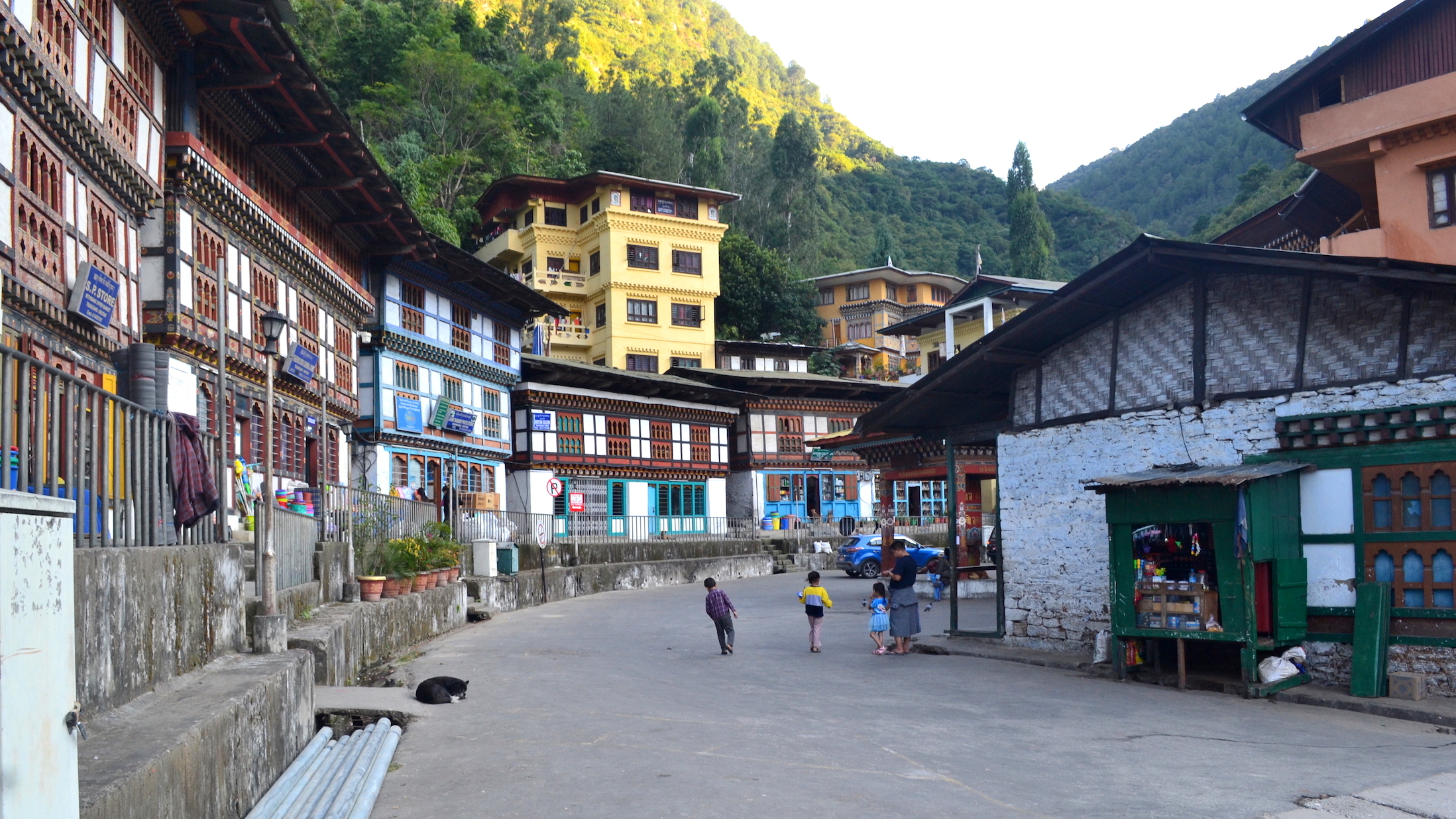Bhutan, often referred to as the last Shangri-La, offers a unique and enchanting experience in terms of entertainment. This Himalayan kingdom, known for its philosophy of Gross National Happiness, intertwines its rich cultural heritage with modern forms of amusement. From the colorful Tshechu Festivals that showcase the spiritual depth of Bhutanese Buddhism to the national sport of Bhutanese Archery, which is much more than just a competitive activity, Bhutan's entertainment scene is deeply rooted in tradition. The country also takes pride in its Traditional Bhutanese Music and Dance, an integral part of its cultural identity, and the emerging realm of Bhutanese Cinema, which reflects the contemporary narratives of Bhutanese society. For adventure enthusiasts, Hiking and Trekking in Bhutan offer an unparalleled exploration of the majestic Himalayas. The traditional art of Thangka Paintings represents the spiritual aspect of Bhutanese artistry, while the evolving Bhutan Nightlife provides a glimpse into the country's modern lifestyle. Lastly, Bhutanese Folklore and Literature preserve the ancient wisdom and stories of this mystical land. Each aspect of entertainment in Bhutan is not just an activity but an expression of the country's deep-seated values and traditions, offering a unique and immersive experience to its visitors.
We pride ourselves on being the premier choice for experiencing the vibrant and diverse entertainment in Bhutan. Our deep understanding and appreciation of Bhutan's rich cultural heritage enable us to offer uniquely curated experiences that go beyond the ordinary. From the mesmerizing Tshechu Festivals to the thrilling Bhutanese Archery competitions, our tours are designed to immerse you in the heart of Bhutanese festivities and traditions. We bring you closer to the soul-stirring Traditional Bhutanese Music and Dance and give you a front-row seat to the evolving world of Bhutanese Cinema. For adventure seekers, our tailored Hiking and Trekking expeditions in Bhutan are unparalleled, leading you through breathtaking landscapes and spiritual landmarks. Our expertise also extends to showcasing the exquisite Thangka Paintings and guiding you through the vibrant Bhutan Nightlife. With Luxury Holidays Nepal, you not only visit Bhutan; you experience its essence through its folklore, literature, and the warmth of its people. Trust us to be your guide in this journey of discovery, where every aspect of Bhutanese entertainment is an avenue to create lasting memories.
Traditional dance performances
Traditional dance performances in Bhutan are an integral part of the country's cultural and spiritual expression. These dances, known as Cham, are more than mere entertainment; they are a form of meditation and a way to impart moral lessons. Here are some key aspects of traditional dance performances in Bhutan:

-
Religious Significance: Many of the dances are deeply rooted in Vajrayana Buddhism and are performed during religious festivals like the Tshechu. These dances are believed to confer blessings upon the spectators and to cleanse them of their sins.
-
Masked Dances: A distinctive feature of Bhutanese traditional dances is the use of masks. These masks, often representing deities, animals, or mythical beings, are intricately designed and brightly colored. They play a crucial role in storytelling and add a mystical element to the performances.
-
Elaborate Costumes: Dancers wear elaborate costumes made of rich fabrics, vibrant colors, and intricate designs. These costumes, along with the masks, contribute to the visual splendor of the performances and are essential for bringing the characters to life.
-
Storytelling: Traditional dances in Bhutan often depict stories from Buddhist mythology, folklore, and historical events. Through expressive movements and symbolic gestures, dancers narrate tales of good triumphing over evil, the life of Buddha, and other moral and spiritual stories.
-
Festive Atmosphere: These dance performances are usually a part of larger festivities that include local communities gathering together. The atmosphere is lively, with music, feasting, and a general air of celebration.
-
Variety of Dances: There is a wide range of traditional dances, each with its own unique set of movements, costumes, and meanings. Some dances are quite dramatic and energetic, while others are more subdued and meditative.
-
Cultural Preservation: Traditional dance performances are a key aspect of Bhutan's efforts to preserve and promote its unique culture. They are not only performed for tourists but are an active part of Bhutanese life, with significant importance placed on their continuation and accuracy in portrayal.
-
Community Participation: These dances are often a community effort, with local monks or villagers participating as dancers, musicians, and artisans. This community involvement adds to the authenticity and vibrancy of the performances.
Traditional dance performances in Bhutan are a vivid and dynamic representation of the country's rich cultural and spiritual heritage. They are an essential experience for anyone seeking to understand and appreciate the depth of Bhutanese culture.
Bhutanese Archery
Bhutanese Archery, or "Dha," is not only the national sport of Bhutan but also a deeply embedded aspect of its cultural and social fabric. This traditional sport stands out for its unique characteristics and the vibrant atmosphere surrounding its practice. Here are key points that highlight the significance and nature of Bhutanese Archery:

Archery Competition
-
Cultural Significance: Archery in Bhutan is more than a sport; it's a celebration of Bhutanese heritage and identity. It holds a special place in the hearts of the Bhutanese people and is intertwined with various aspects of their culture and history.
-
Traditional Equipment: Unlike modern archery, Bhutanese archery traditionally uses bamboo bows and arrows. These handmade equipment are a testament to the skill and craftsmanship of Bhutanese artisans. In recent times, however, the use of modern recurve bows has also become popular.
-
Festive Atmosphere: Archery tournaments in Bhutan are lively and festive events. They are often accompanied by traditional music, dance, and a lot of socializing. Spectators, including friends and family of the archers, gather to enjoy the competition and participate in the festivities.
-
Community Involvement: Archery tournaments are community events where people come together to celebrate. They foster a sense of community and are occasions for social interaction, including friendly rivalries between teams from different regions or villages.
-
Rituals and Customs: The sport is imbued with various rituals and customs. Archers often perform ceremonial dances and chants before shooting, believed to increase their chances of success. The sport is as much a mental and spiritual exercise as it is a physical one.
-
Unique Rules and Scoring: Bhutanese archery has its own set of rules and scoring system, which differ from international archery standards. The targets are smaller and placed at a considerable distance, typically around 145 meters apart, making it a challenging sport.
-
Good-Natured Taunting: A unique feature of Bhutanese archery is the good-natured taunting and jesting that occurs during matches. Teams often tease each other in an attempt to distract the opposing archers, adding an element of psychological warfare to the game.
-
Gender Inclusivity: While traditionally a male-dominated sport, there's a growing interest in archery among Bhutanese women. Women's participation in archery is increasingly encouraged, reflecting a shift towards greater gender inclusivity in sports in Bhutan.
-
National Tournaments: Major archery tournaments are significant events in Bhutan. These tournaments draw teams from across the country and are often graced by members of the royal family, adding to their prestige.
Bhutanese Archery is a vibrant and integral part of Bhutan's cultural landscape. It's a sport that encapsulates the spirit of Bhutanese tradition, community, and festivity, offering a unique and engaging form of entertainment for both participants and spectators.
Bhutanese Cinema
Bhutanese cinema, a relatively recent development in the country's cultural landscape, offers a fascinating insight into both the traditional and contemporary aspects of Bhutanese society. Here are some key features of Bhutan's film industry:
-
Emergence and Growth: Bhutanese cinema is relatively young, having started gaining momentum in the late 1990s. This industry has seen significant growth over the past few decades, despite its late start compared to other countries.
-
Cultural Representation: Bhutanese films often focus on the country's rich cultural heritage, showcasing traditional Bhutanese life, values, and folklore. These films serve as a medium for preserving and promoting Bhutan's unique culture and traditions.
-
Modern Themes: Alongside traditional stories, contemporary Bhutanese cinema also explores modern themes and social issues. This includes topics such as urbanization, globalization, and the generational gap, reflecting the changes and challenges in modern Bhutanese society.
-
Language and Accessibility: Most Bhutanese films are produced in Dzongkha, the national language, and sometimes in Sharchop, another widely spoken language in Bhutan. This makes cinema a powerful tool for strengthening national identity and linguistic unity.
-
International Recognition: Bhutanese cinema has started to gain international recognition, with films being screened at various international film festivals. This global exposure is helping to put Bhutanese cinema on the world map.
-
Limited Resources and Challenges: The Bhutanese film industry operates with limited resources and infrastructure. Despite these challenges, filmmakers are known for their creativity and resourcefulness in telling compelling stories.
-
Influence of Bollywood and Hollywood: Bhutanese cinema is influenced by both Bollywood (Indian cinema) and Hollywood. This influence is evident in the narrative style, music, and even the production aspects of Bhutanese films.
-
Government Support and Censorship: The government of Bhutan supports the growth of its film industry, although there is a level of censorship to ensure that content aligns with Bhutanese values and cultural norms.
-
Rising Talents: The industry is fostering a new generation of filmmakers, actors, and technicians who are passionate about storytelling and the art of cinema. This burgeoning talent is vital for the future growth of Bhutanese cinema.
Bhutanese cinema is an evolving field that blends traditional Bhutanese stories with contemporary themes. It is an integral part of Bhutan’s cultural expression, providing both entertainment and a reflection of the country's changing social landscape.
Hiking and Trekking
Hiking and trekking in Bhutan offer an exhilarating and immersive experience into the natural beauty and cultural richness of this Himalayan kingdom. Known for its majestic landscapes and serene environment, Bhutan is a paradise for outdoor enthusiasts. Here are some key aspects of hiking and trekking in Bhutan:
-
Diverse Trails: Bhutan offers a wide range of trekking and hiking options, from easy walks through serene valleys and forests to challenging treks in the high Himalayas. Popular treks include the Jomolhari Trek, Druk Path Trek, and the challenging Snowman Trek.
-
Natural Beauty: Trekking in Bhutan is characterized by stunning natural scenery. Trekkers can experience lush forests, high mountain passes, pristine lakes, and beautiful meadows. The country's commitment to maintaining its natural environment ensures that these landscapes remain unspoiled.
-
Cultural Insights: Trekking in Bhutan is not just about the physical journey; it’s also a cultural experience. Many trails pass through remote villages and ancient monasteries, offering trekkers a chance to experience Bhutanese village life and their rich cultural heritage.
-
Flora and Fauna: Bhutan's diverse ecosystems are home to a wide variety of flora and fauna. Trekkers might encounter rare species such as the Takin (Bhutan’s national animal), red pandas, and various bird species, including the elusive Black-necked Crane.
-
Spiritual Experience: Many treks in Bhutan have a spiritual element, taking trekkers to sacred sites, monasteries, and temples. The famous Tiger’s Nest Monastery (Paro Taktsang) is a prime example, offering both a physical challenge and a spiritual encounter.
-
Sustainable Tourism: Bhutan’s approach to tourism, emphasizing sustainability and environmental conservation, ensures that trekking activities have minimal impact on the natural surroundings. This responsible tourism policy helps preserve the unique beauty of Bhutan's landscapes.
-
Guided Treks: Given the terrain and the special tourism policies of Bhutan, most treks are guided and well-organized. Professional guides not only lead the way but also provide insights into the local culture, history, and environment.
-
Best Time to Trek: The best times for trekking in Bhutan are during the spring (March to May) and autumn (September to November) months. During these periods, the weather is generally clear and pleasant, offering the best views of the Himalayas.
-
Preparation and Fitness: Treks in Bhutan can vary in difficulty, so it's important for trekkers to choose a trek that matches their fitness level. Proper preparation, including physical conditioning and packing the right gear, is essential for a safe and enjoyable trekking experience.
Hiking and trekking in Bhutan are not just about exploring the natural wonders of the Himalayas but also about experiencing the country's deep-rooted culture and spirituality. These adventures offer a unique blend of physical challenge, cultural immersion, and spiritual enrichment.
Thangka Paintings
Thangka paintings are a distinctive and spiritually significant art form in Bhutan, reflecting the country's deep Buddhist traditions and artistic heritage. These intricately detailed and symbolically rich paintings serve both as objects of devotion and as tools for teaching the principles of Buddhism. Here are some key aspects of Thangka paintings in Bhutan:
-
Spiritual Significance: Thangkas are more than just paintings; they are revered as sacred objects that embody the divine. They are used in religious rituals, meditation, and ceremonies, serving as aids for visualization and concentration.
-
Intricate Artistry: Thangka paintings are known for their intricate detail and complex iconography. They often depict Buddhist deities, scenes from the life of Buddha, or various mandalas (geometric representations of the spiritual universe).
-
Traditional Techniques: The creation of Thangkas involves traditional methods passed down through generations. Artists use natural pigments and prepare their canvases with a mixture of chalk and gesso. The process is meticulous and can take weeks, months, or even years, depending on the complexity.
-
Cultural Preservation: Thangkas are an essential part of Bhutan’s cultural and religious heritage. They are a key medium through which Buddhist philosophy and history are preserved and transmitted.
-
Symbolism and Meaning: Every aspect of a Thangka, from the colors used to the posture of figures, has symbolic significance. These paintings are rich in Buddhist symbolism and often convey deep spiritual meanings.
-
Use in Meditation and Teaching: Thangkas serve as important tools in Buddhist meditation and teaching. They are used to help focus the mind and to illustrate the teachings of Buddhism.
-
Variety and Styles: There is a wide variety of Thangka paintings, each with its own style, symbolism, and iconography. Some common types include Mandala Thangkas, Guru Thangkas (depicting various Buddhist masters), and Deity Thangkas.
-
Tourist Interest: For visitors to Bhutan, Thangkas are a fascinating aspect of local art and spirituality. They are sought after as souvenirs and are appreciated for their beauty and craftsmanship.
-
Learning and Workshops: Several institutes and workshops in Bhutan offer courses in Thangka painting, attracting both local and international students eager to learn this intricate art form.
Thangka paintings are a vital part of Bhutan's cultural and religious landscape, offering a unique blend of artistry, spirituality, and tradition. They not only serve as a visual representation of Buddhist teachings but also play an important role in the preservation of Bhutanese heritage.
Bhutan Nightlife
Bhutan's nightlife might come as a pleasant surprise to those who perceive the country solely in terms of its traditional and serene image. While it's true that Bhutan is not widely known for a bustling nightlife like some other tourist destinations, it does offer its own unique and enjoyable evening experiences. Here's an overview of what Bhutan's nightlife has to offer:

-
Low-Key but Enjoyable: Nightlife in Bhutan is relatively low-key compared to the West or even its neighboring countries. It provides a pleasant and enjoyable experience with a mix of modern and traditional elements.
-
Bars and Pubs: In major towns like Thimphu, Paro, and Phuentsholing, there are a number of bars and pubs that stay open late. These venues often offer a cozy atmosphere and serve a variety of drinks, including the local favorite, Ara, a traditional alcoholic beverage made from rice or wheat.
-
Live Music and Performances: Some bars and hotels in Bhutan feature live music, including traditional Bhutanese songs as well as contemporary music. These live performances are a great way to experience the local music scene.
-
Nightclubs and Discos: In the capital city, Thimphu, there are a few nightclubs and discos where one can experience a more upbeat and contemporary nightlife scene. These clubs often play a mix of Bhutanese, Bollywood, and international music.
-
Cultural Shows: For those interested in a more cultural experience, some hotels and tourist resorts offer traditional Bhutanese cultural shows during the evening. These shows include folk dances, music performances, and sometimes even demonstrations of traditional sports like archery.
-
Dining Out: The nightlife experience in Bhutan also includes enjoying the local cuisine at various restaurants. Bhutanese cuisine offers a range of flavors, mostly known for its spiciness and use of cheese and chilies.
-
Night Markets: In certain towns, night markets pop up, where one can browse through a variety of local crafts, textiles, and food items. These markets provide a glimpse into the local way of life and are an opportunity to purchase unique Bhutanese souvenirs.
-
Safety and Tranquility: One of the highlights of Bhutanese nightlife is its safety and tranquility. The streets are safe to walk at night, and the overall atmosphere is relaxed and friendly.
-
Limited Hours: It's important to note that nightlife in Bhutan does not go on until the early hours of the morning as in many other countries. Most establishments close by midnight or earlier.
Nightlife in Bhutan, though not as extensive or vibrant as in more cosmopolitan cities, offers its own charm and a blend of traditional and modern experiences. It's a part of Bhutan's growing tourism scene and provides visitors with a different perspective of the country's culture and lifestyle.
Stroll through town
A stroll through the towns in Bhutan offers a unique blend of cultural immersion, historical exploration, and scenic beauty, making it a delightful form of entertainment for visitors and locals alike. Bhutanese towns, with their traditional architecture and serene environment, provide a peaceful yet engaging experience. Here's what one can expect while strolling through Bhutanese towns:

-
Traditional Architecture: Bhutanese towns are known for their traditional architecture, featuring intricately designed buildings with colorful window frames, sloping roofs, and classic Bhutanese motifs. The harmony of these structures with the natural surroundings is a visual treat.
-
Local Markets and Handicraft Shops: Strolling through the local markets, one can find a range of Bhutanese handicrafts, textiles, and souvenirs. These markets are vibrant hubs of activity and provide insight into Bhutanese art and craft traditions.
-
Monasteries and Temples: Many towns in Bhutan are home to ancient monasteries and temples. A casual walk often leads to these spiritual sites, where visitors can witness monks in prayer, observe religious art, and experience the tranquility of these sacred spaces.
-
Cafes and Restaurants: Small, cozy cafes and restaurants dot the towns, offering a taste of local Bhutanese cuisine. These eateries are great places to relax, enjoy Bhutanese dishes, and interact with locals.
-
Street Festivals and Performances: Depending on the time of visit, one might encounter street festivals or cultural performances. These events showcase traditional music, dance, and costumes, and are a lively display of Bhutanese culture.
-
Historical Sites: Bhutanese towns often have historical sites like dzongs (fortresses), museums, and memorial chortens. Visiting these sites provides a deeper understanding of Bhutan's history and heritage.
-
Interaction with Locals: Bhutanese people are known for their friendliness and hospitality. Interacting with locals during a stroll can lead to enriching exchanges and insights into the Bhutanese way of life.
-
Photography Opportunities: The scenic beauty, traditional architecture, and colorful cultural scenes make Bhutanese towns a photographer’s paradise. Each turn offers a new perspective and a chance to capture the essence of Bhutan.
-
Peaceful Environment: Unlike bustling cities, towns in Bhutan offer a serene and peaceful environment, making a stroll an experience in mindfulness and relaxation.
-
Scenic Landscapes: Nestled in the Himalayas, Bhutan’s towns offer breathtaking views of mountains, valleys, and rivers, making every stroll a scenic adventure.
A stroll through Bhutanese towns is not just a leisurely walk but a journey through the heart of Bhutanese culture, history, and natural beauty. It’s an opportunity to slow down, observe, and absorb the unique charm and tranquility of Bhutan.
The realm of Entertainment in Bhutan offers a unique and enriching experience that beautifully intertwines the traditional with the contemporary. From the spiritual reverberation of Tshechu Festivals and the cultural vibrancy of Traditional Bhutanese Music and Dance, to the national pride in Bhutanese Archery and the emerging narratives of Bhutanese Cinema, each aspect forms a mosaic of Bhutan's rich heritage. The thrill of Hiking and Trekking in the pristine Himalayan landscapes, the intricate spirituality of Thangka Paintings, the evolving scene of Bhutan Nightlife, and the profound tales of Bhutanese Folklore and Literature together weave a tapestry that not only entertains but also deeply connects one to the heart and soul of Bhutanese culture.
FAQs: Entertainment in Bhutan
Q: What are the most popular forms of entertainment in Bhutan?
A: The most popular forms include the Tshechu festivals, traditional Bhutanese music and dance, archery competitions, Thangka paintings, and cinema. Outdoor activities like hiking and trekking are also highly popular among both locals and tourists.
Q: Can tourists participate in Bhutanese festivals and cultural activities?
A: Yes, tourists are welcome to participate and experience Bhutanese festivals and cultural activities. It's a great way to immerse in the local culture and understand Bhutanese traditions.
Q: Is there a nightlife scene in Bhutan?
A: Bhutan's nightlife is relatively low-key compared to other countries, but cities like Thimphu offer a range of bars, pubs, and occasional nightclubs where visitors can enjoy local and international music.
Q: What is unique about Bhutanese cinema?
A: Bhutanese cinema is known for its blend of traditional storytelling and modern themes. The films often showcase the country's rich culture, landscapes, and contemporary social issues.
Q: Are there any restrictions for tourists during Tshechu festivals?
A: While there are no strict restrictions, tourists are expected to dress modestly and behave respectfully, as these festivals are religious events.
Q: How popular is archery in Bhutan?
A: Archery is Bhutan's national sport and is extremely popular. It's not just a sport but a significant part of Bhutanese culture, with competitions often accompanied by celebrations.
Q: What should trekkers expect when hiking in Bhutan?
A: Trekkers can expect scenic trails ranging from easy walks to challenging high-altitude treks. They'll experience Bhutan's natural beauty, cultural landmarks, and possibly encounter rare wildlife.
Q: Are Thangka paintings available for purchase by tourists?
A: Yes, tourists can purchase Thangka paintings. They are a popular souvenir, reflecting Bhutan's artistic heritage. It's important to ensure you're buying an authentic piece from a reputable source.
Q: Is Bhutanese folklore and literature accessible to non-Bhutanese speakers?
A: Yes, there are translated versions of many Bhutanese folklore and literary works available for non-Bhutanese speakers, offering insight into the country's rich storytelling traditions.
Q: What kind of music can be expected in Bhutan?
A: Visitors can enjoy traditional Bhutanese music, which often features unique instruments like the dramyen and lingm, as well as modern music that includes influences from India and the West.
If you need any further information, please contact us, Email: at [email protected], Phone: at +977- 985 100 5129 (WhatsApp)




